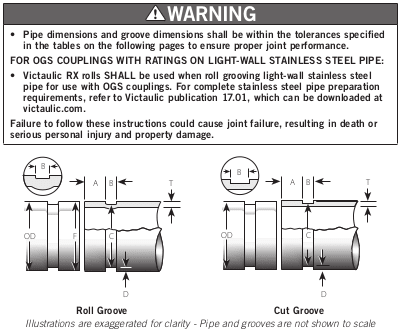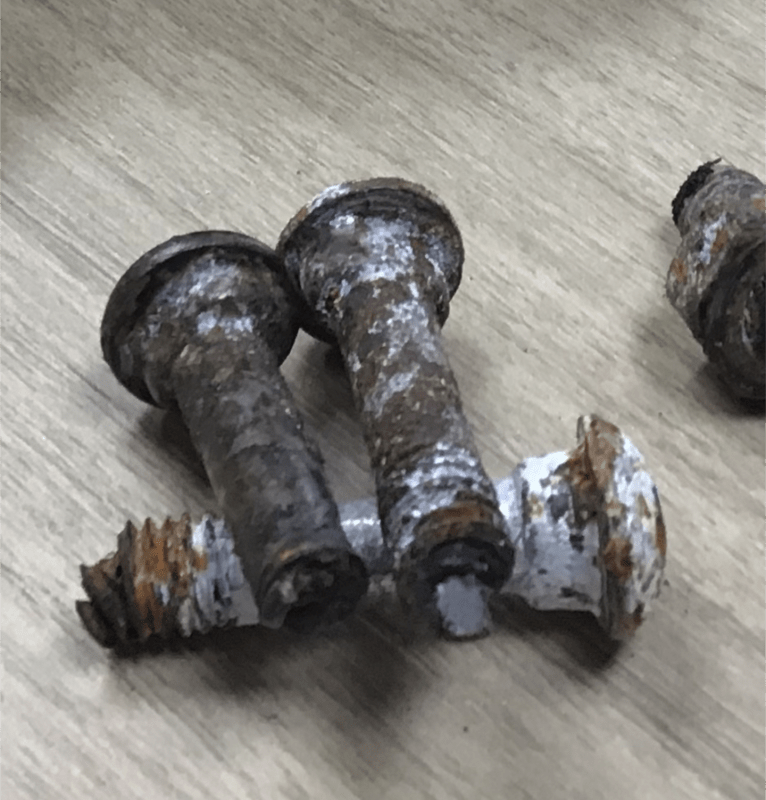Lnewqban
Mechanical
- Nov 1, 2013
- 85
Dear all,
I am involved in an engineering problem related to pipe connectors that have been failing around every five years.
This has happened in Florida, in an office building, and for a chilled water piping system serving individual coils and fed by VFD pumps.
The bolts of the couplings have been failing, only weeks apart, and flooding the corridors of the building.
That happened about five years ago, time at which all the original bolts were replaced, and is currently happening again.
The manager of the building has contacted my company about a permanent solution to this problem.
Please, see attached picture of broken bolts.
There is a rooftop chiller, from which two main insulated pipes go down and branch out in two opposite directions for about 60 yards each way, making two closed loops.
The broken pipes (branches closer to the roof chiller and vertical pipes) should be 2-1/2 inches diameter, according to specified in the drawings.
A local AC contractor has estimated a cost for replacement of all the 375 couplings and rubber seals, installing stainless steel bolts rather than regular steel, as original.
The bolts that have failed show signs of normal corrosion and all have broke by the section where the nut meets the casing.
There are no expansion loops in the original system, and the broken sections show areas of corrosion and new metal, which make me believe that the failure may be caused by metal fatigue.
The system rests at night and moves chilled water during the day.
I don’t have any experience with this type of connectors.
I would love to learn your first impression about the probable causes or failure, and possible remediation.
Perhaps a type of coupling able to absorb the bending stress of thermal dilatation-contraction cycles?
Thank you for your time.
"Where the spirit does not work with the hand, there is no art." - Leonardo da Vinci
I am involved in an engineering problem related to pipe connectors that have been failing around every five years.
This has happened in Florida, in an office building, and for a chilled water piping system serving individual coils and fed by VFD pumps.
The bolts of the couplings have been failing, only weeks apart, and flooding the corridors of the building.
That happened about five years ago, time at which all the original bolts were replaced, and is currently happening again.
The manager of the building has contacted my company about a permanent solution to this problem.
Please, see attached picture of broken bolts.
There is a rooftop chiller, from which two main insulated pipes go down and branch out in two opposite directions for about 60 yards each way, making two closed loops.
The broken pipes (branches closer to the roof chiller and vertical pipes) should be 2-1/2 inches diameter, according to specified in the drawings.
A local AC contractor has estimated a cost for replacement of all the 375 couplings and rubber seals, installing stainless steel bolts rather than regular steel, as original.
The bolts that have failed show signs of normal corrosion and all have broke by the section where the nut meets the casing.
There are no expansion loops in the original system, and the broken sections show areas of corrosion and new metal, which make me believe that the failure may be caused by metal fatigue.
The system rests at night and moves chilled water during the day.
I don’t have any experience with this type of connectors.
I would love to learn your first impression about the probable causes or failure, and possible remediation.
Perhaps a type of coupling able to absorb the bending stress of thermal dilatation-contraction cycles?
Thank you for your time.
"Where the spirit does not work with the hand, there is no art." - Leonardo da Vinci


